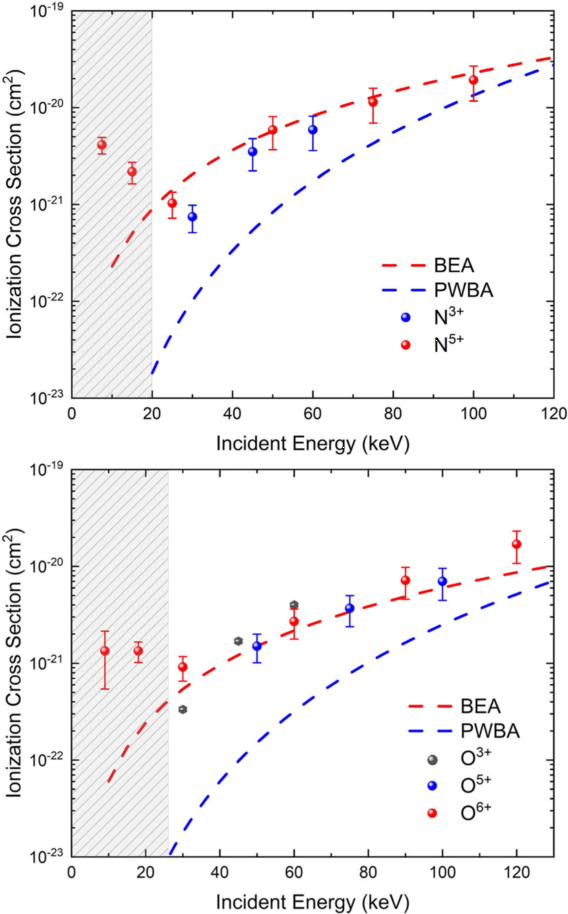Laboratory Simulation Sheds Light on Mechanism of Solar-wind-induced Comet X-rays
Researchers at the Institute of Modern Physics (IMP) of Chinese Academy of Sciences (CAS) have recently established an experimental platform for simulating the X-ray emission from comets irradiated by solar wind ions. With this platform, they studied the X-ray emission produced by highly charged ions bombarding the nickel surface. The results were published in European Physical Journal Plus on September 7.
Comets are one of the coldest stars in the solar system. The X-ray radiation mechanism of comets has been a controversial issue, for it used to be explained by different physical mechanisms. The reason is primarily related to the measurement of X-ray yield and cross-section in experiments. The difficulty of precisely measuring the collision current intensity, leads to the inaccuracy of X-ray yield and cross-section, thus resulting in great uncertainty in fitting the X-ray energy spectrum of comets.
To accurately measure the incident current intensity, researchers at IMP have built a simulation platform on 14.5 GHz electron cyclotron resonance ion source (ECRIS), which has realized real-time monitoring and accurate measurement of collision current intensity, laying good foundation for clarifying the physical mechanism of comet X-ray emission.
Based on this platform, researchers studied X-ray emission caused by the interaction of highly charged nitrogen and oxygen ions with the nickel metal surface. They obtained accurate data on X-ray production by precisely measuring the collision current intensity.
In addition, researchers found that the X-ray cross section was quite different from the existing theoretical expectation, when the incident energy of the ions was less than 5 keV/q. They proposed an inner shell multi-electron transition model that successfully explained the phenomenon.
The above-mentioned platform construction and research have laid the groundwork for laboratory simulations of comet X-rays caused by solar wind, and provide new insights into the physical mechanism of comet X-ray radiation.
The study was supported by the National Natural Science Foundation of China.

Figure 1. X-ray cross section of high charged nitrogen and oxygen ions colliding with nickel surface. When the incident ion energy is less than 5 keV/q, the experimental results deviate significantly from the theoretical expectations. (Image by WANG Wei)

Figure 2. Schematic diagram of the different steps of the internal multi-electronic excitation process in the neutralization of an O6+ ion at a surface. (Image by WANG Wei)
Contact :
LIU Fang
Institute of Modern Physics
Email: fangliu@impcas.ac.cn
Contact Information
Institute of Modern Physics
Email: fangliu@impcas.ac.cn



 甘公网安备 62010202000713号
甘公网安备 62010202000713号


